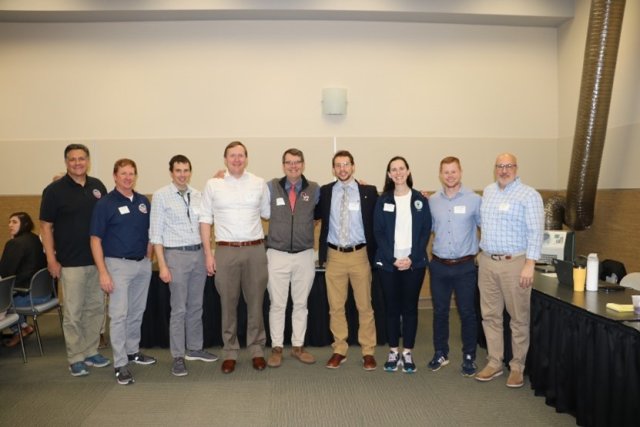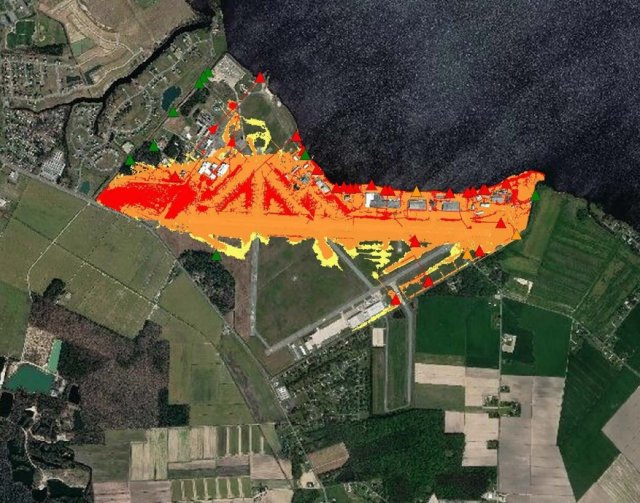Stormwater Modeling to Prepare for Biological and Radiological Emergencies
Published September 17, 2024

Stormwater can transport pollutants, such as heavy metals, pathogens, and nutrients, which threaten the quality of rivers, lakes, and oceans. Many stormwater operators have not considered or planned for the challenges in predicting and mitigating transport of biological agents (e.g., anthrax-causing bacterium) or long-lasting radionuclides (e.g., cesium-137) that may result from a terrorist attack. Awareness and tools to prepare for nefarious large-scale release scenarios is limited in the stormwater sector.
In collaboration with the Department of Homeland Security’s Science and Technology Directorate (DHS S&T), EPA researchers developed stormwater models that were later used in a series of stakeholder workshops to bring about awareness, training, and a checklist resource to help state and local emergency stormwater community predict and mitigate transport of bio agents and radionuclides.
Closing the Knowledge Gap
Using EPA’s Stormwater Management Model (SWMM), EPA researchers developed models of three cities - Detroit, Buffalo, New York, and a U.S. Coast Guard Base in Elizabeth City, North Carolina - to track and quantify washoff of deposited Cesium-137 following a mock explosion of a radiological dispersal device. A radiological dispersal device, often referred to as a “dirty bomb”, is a combination of an explosive, such as dynamite, with a radioactive powder. This type of device can have a broad range of impacts depending on the size of the explosion, the type of radioactive material used, how it was dispersed, and the weather conditions at the time of dispersal. These models identified how contamination could be transported and discharged throughout the locations following a rain event. This information could be used by emergency response teams to identify the most impacted portions of infrastructure and inform decisions to prioritize cleanup, monitoring and treatment, and restrict entry points.
Engaging Stakeholders

It is vital to use this research to teach stormwater practitioners how to prepare for such scenarios while learning from them to further develop practical resources and answer questions.
In July 2022, EPA researchers conducted a workshop in conjunction with DHS S&T’s National Urban Security Technology Laboratory, bringing together radiological emergency responders and stormwater system modelers, managers, and researchers from all levels of government, academia, and industry. Participants engaged in a “dirty bomb” contamination scenario developed on a U.S. Coast Guard Base in Elizabeth City, North Carolina, where they discussed how data could be used in response activities and what additional information was needed.
This workshop resulted in the development of a checklist that stormwater practitioners could use to help prepare and perform similar assessments. The checklist includes resource readiness and coordination sections covering actions to be executed prior to radiological emergency. It walks the user through planning, modeling, and coordination steps between radiological emergency planners, stormwater utility staff, and radiation exposure experts that are necessary to prepare for and respond to a radiological event.
In February 2024, EPA researchers continued the education series by partnering with North Carolina State University’s Department of Biological and Agricultural Engineering’s Extension Program. This workshop focused on a large-scale biological incident, asking what would happen if the transported contaminants were a dangerous disease-causing agent. Discussion focused on how organizations could sample and remediate their stormwater infrastructure in a safe and effective manner. Presenters provided an overview of biological threats, federal incident response, and shared EPA’s stormwater field studies that were part of the Analysis for Coastal Operational Resiliency project and on the transport of spores through green infrastructure.
The Water and Environment Federation hosted a final workshop in September 2024. It focused on a radiological release scenario in Detroit, Michigan, and expanded on the work presented during the 2022 workshop.
Communicating this research with stakeholders in an interactive space allows participants to have a discussion with subject matter experts and provide insights that can further research in a direction informed by concerns and challenges of stakeholders.
Learn more about the Science:
- Spore and watershed data in stormwater runoff is useful for remediation decisions after a bio-incident.
- Applying SWMM to model spores transport in stormwater runoff and demonstrating capability of large-scale spore contamination simulation.
- Demonstrating different stormwater model configurations and their influence on radiological release scenario simulation results.
